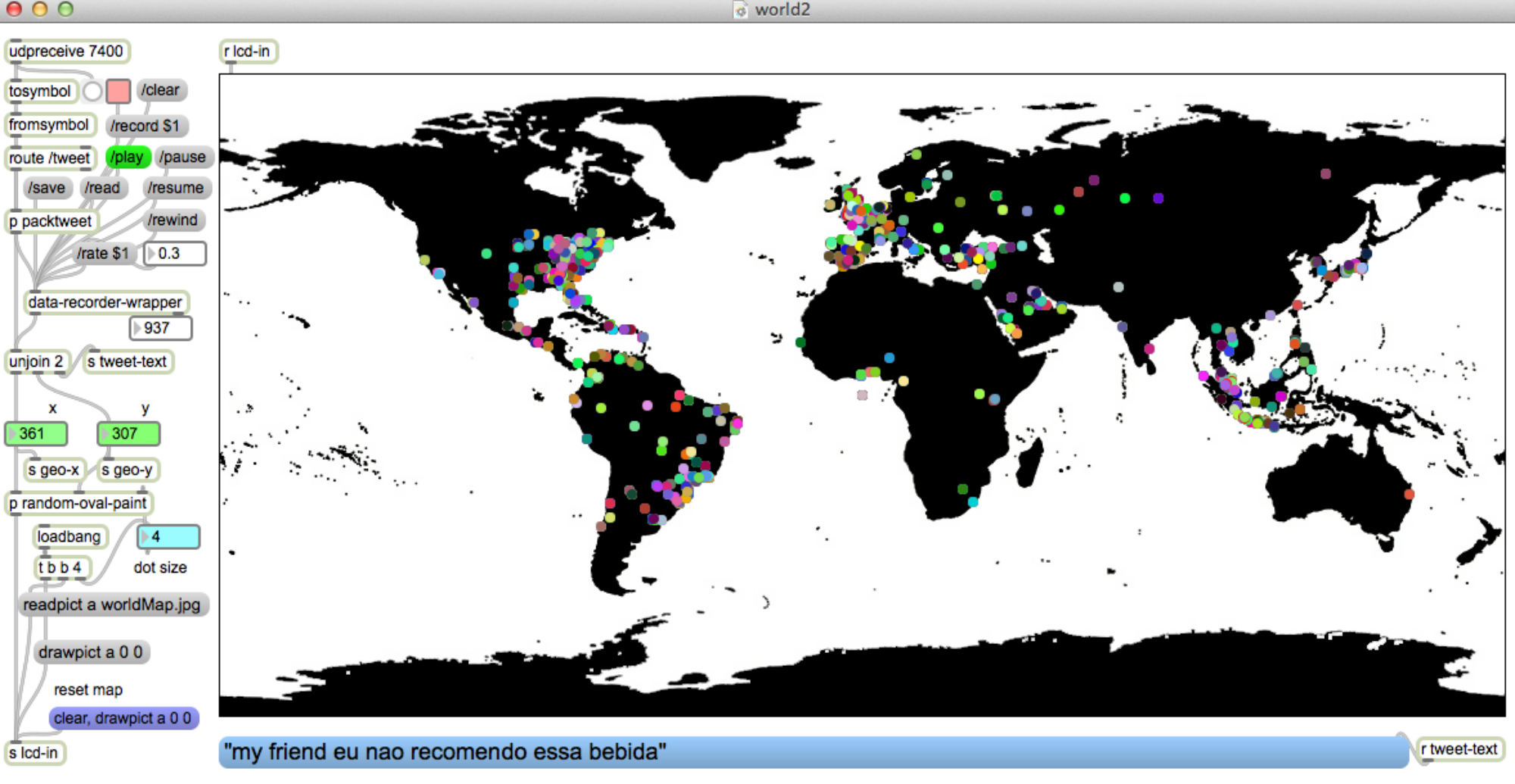Notes:
Audio Signal Processing Course: https://www.coursera.org/
By Xavier Serra and Julius O. Smith
This is a free course offered by Stanford. It starts at the beginning of October. I will be taking the course and would be happy to help you if you are interested in taking it too.
Pd weekend 2014: Katja Vetter Microphone design: http://libguides.lib.siu.edu/puredata
Part I – Pitch detection
How would you construct an ‘Autotune’ effect that works in real time? The first requirement is accurate pitch detection:
Frequency domain:
FFT and STFT: Find frequencies where the signal has greatest energy. Tradeoff between frequency and temporal resolution. Moderate latency.
Max examples: https://reactivemusic.net/?p=11202
Also look at the builtin Max tutorials on the fft~ and pfft~ objects
3rd party Max/Pd objects:
- fiddle~, sigmund~, centroid~ (CNMAT) http://cnmat.berkeley.edu/downloads
- pitch~ (Tristan Jehan) http://web.media.mit.edu/~tristan/maxmsp.htm
DSP code
- DIRAC (Stefan Bernsee) http://www.dspdimension.com/category/tutorial/
- Audiograph (iOS) http://zerokidz.com/audiograph
Time domain:
Zero crossing: Measure the period of waves by counting rate of zero crossings. Doesn’t work with complex waveforms.
Max objects: fzero~ and zerox~
Autocorrelation: Compare a signal with a time shifted copy of itself. Low latency but CPU intensive. Can be improved by using lower sample rates and other tweaks. (Helmholtz)
Example patches: https://reactivemusic.net/?p=17169
(note: gbr.yin~ is a 3rd party object from IRCAM, but is built into Max)
Pd examples from Katja Vetter: (helmholtz~ external)
- “Helmholtz finds the pitch” http://www.katjaas.nl/helmholtz/helmholtz.html
- SliceJockey: http://www.katjaas.nl/slicejockey/slicejockey.html
We also looked at Katja’s new app: InstantDecomposer. If you would like to try this patch, please contact me. I will need to get permission from Katja.
Wavelet transform:
- The Wavelet tutorial by Robi Polikar: http://users.rowan.edu/~polikar/WAVELETS/WTtutorial.html
- Multi Resolution Audio Transforms by Graham Wakefield: http://www.grahamwakefield.net/MAT-F04/201b/
- wavelet~ object (From CNMAT)
Other methods:
- phase locked loop
- human pitch matching (what is the latency?)
- Neural networks?
- Statistical methods (pattern matching)?
Part II – Prototyping
Muse development case study: https://reactivemusic.net/?p=16187
Assignment
Next week we will listen to your music from the future.

